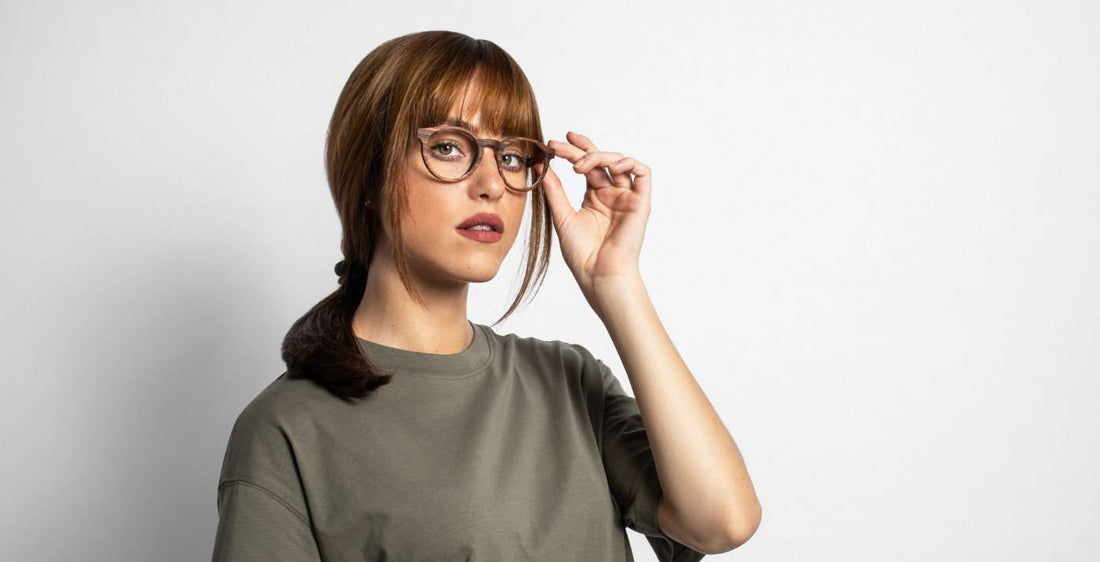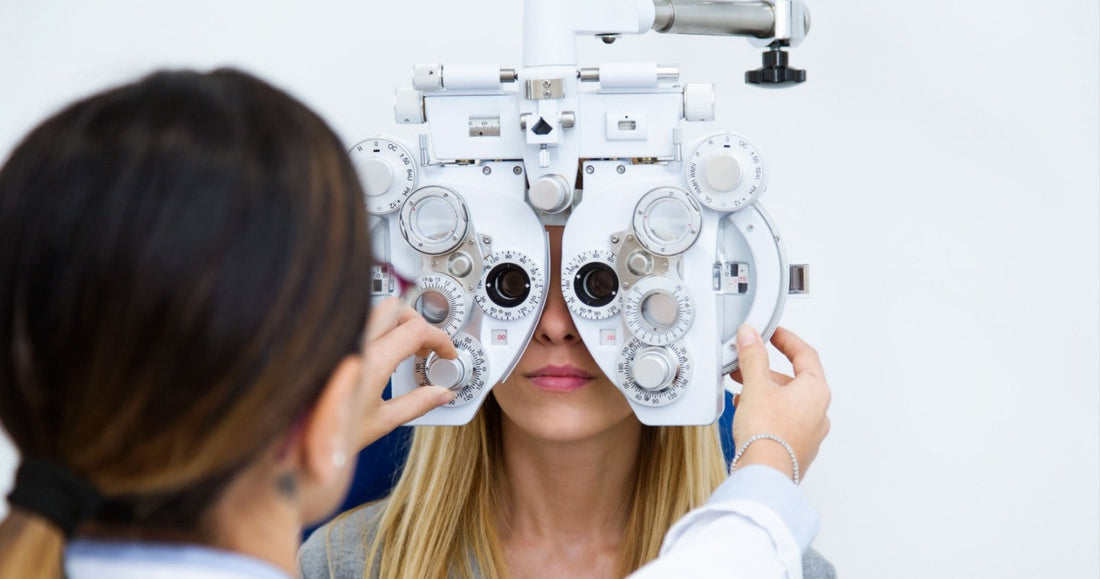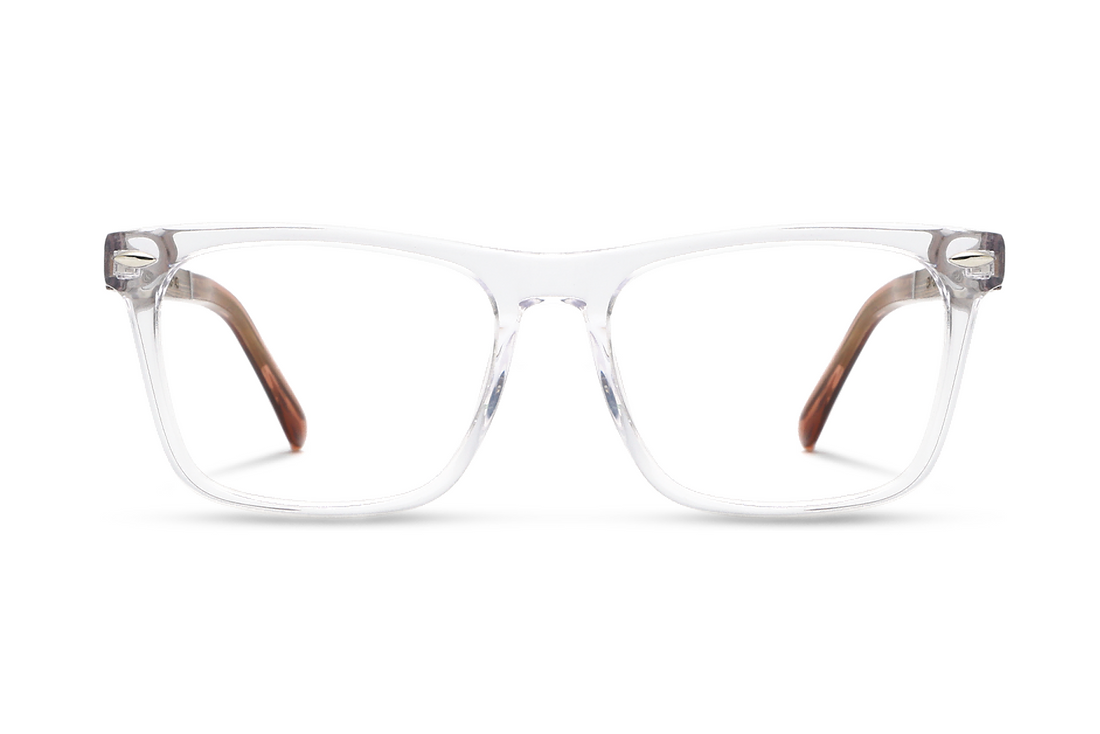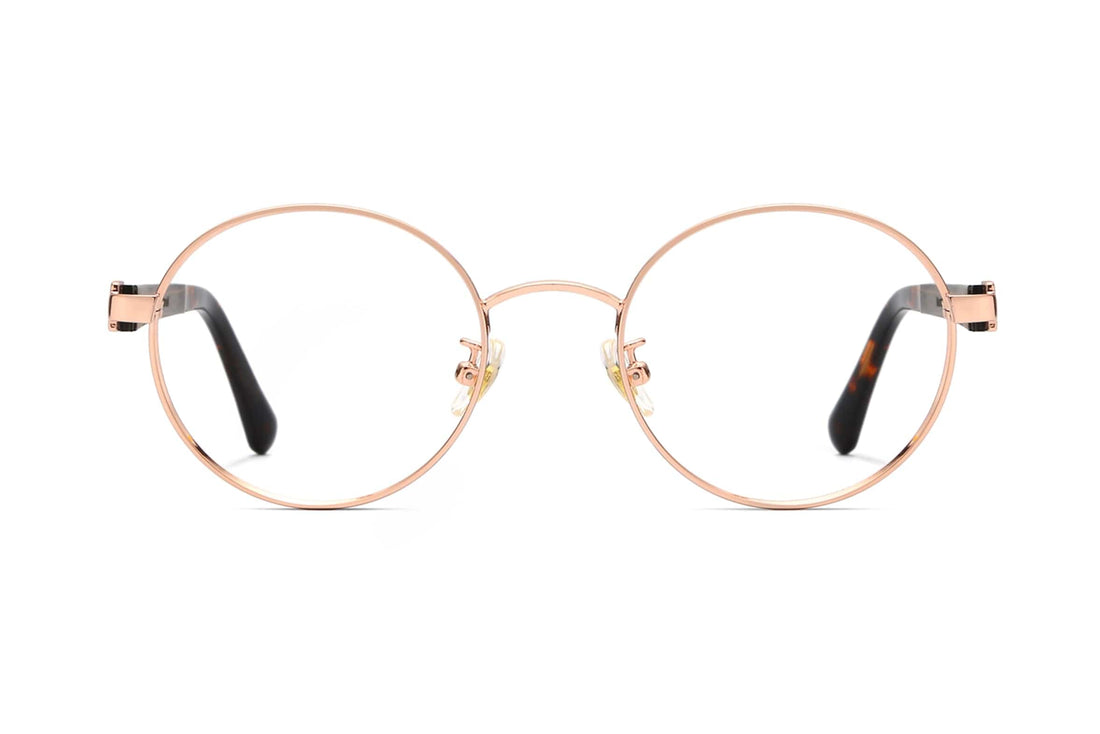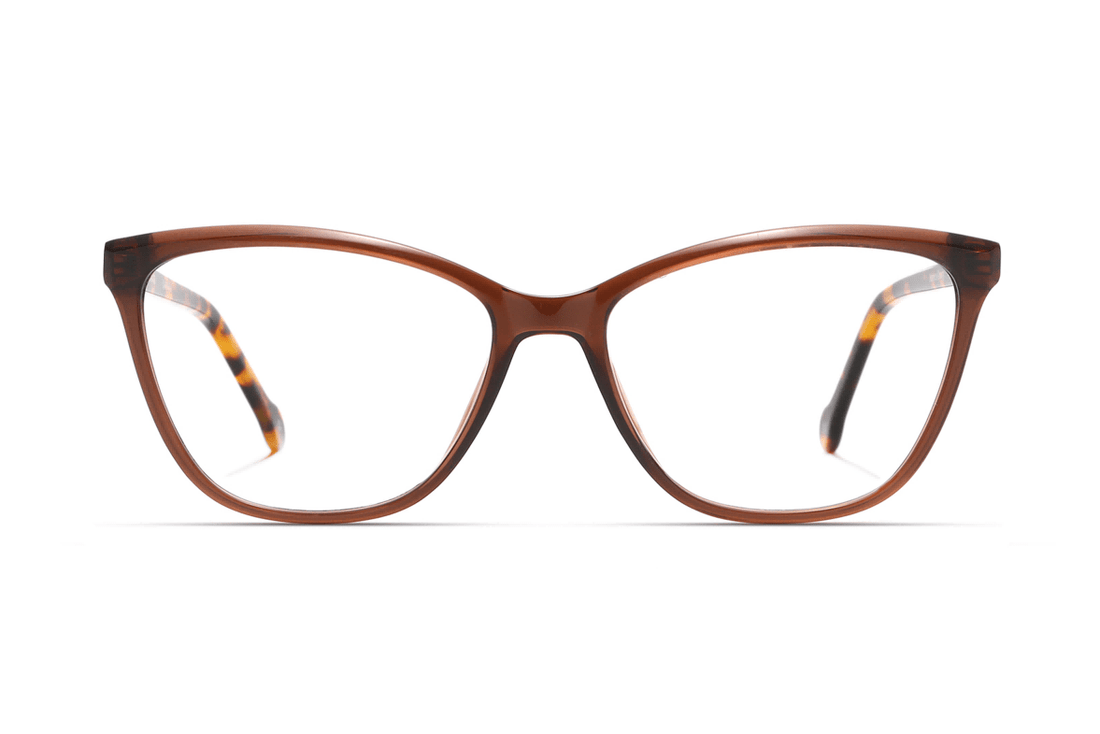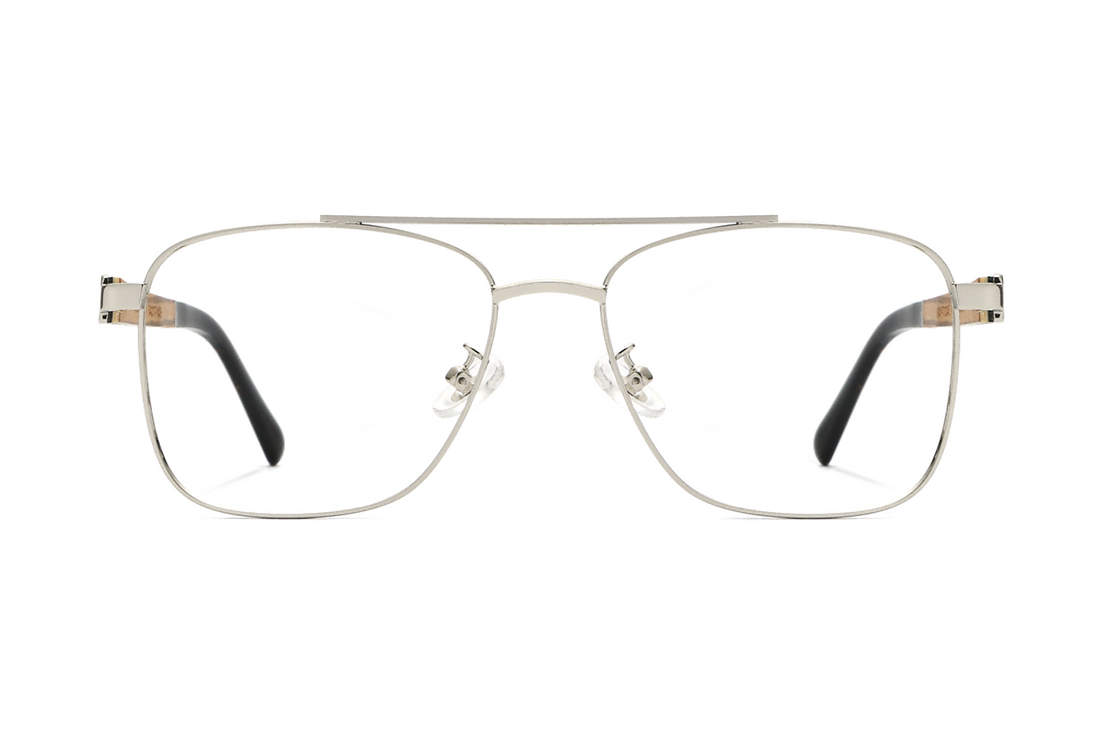
What Are Progressive Lenses: Benefits and Features
What Are Progressive Lenses
10 min read • Postead on 20 December 2024
So, what are progressive lenses? If you wear prescription glasses, you might already be familiar with them. Or perhaps you’ve been asking yourself: What are your progressive glasses or lenses? When your eye doctor prescribes, progressive lenses enable you to see clearly at near, intermediate, and far distances. No more taking on and off glasses between activities.
Unlike bifocals, progressive lenses never appear to have a line to divide their multifocal prescriptions. Yet progressive lenses are a stylish and down-to-earth primary option for all who need multifocal correction. If you’re interested in this versatile solution, let's explore what they are and why you should get one.
How Progressive Lenses Work
1. Transition Between Prescriptions
How do progressive lenses work? Progressive lenses are calculated to provide a gradual mix of multiple prescriptions. You don’t see a stop between near, intermediate, and distance prescription strengths; your eyes move smoothly between them. They create a natural experience. Comparing them with bifocals or trifocals with lines, which alternate different fields of view and allow you to shift your eyes between them quickly, progressive contact lenses blend these different strengths, so we don’t have to stop our eyes and aim at other words.
You will find that it’s as simple as switching your gaze: read looking down, head on to see further away, or peer into something in the distance, no glasses change required. You can do all this smoothly and comfortably thanks to innovative lens technology that automatically optimizes your field of view depending on your needs and lifestyle. Whether it’s your computer screen, mobile phone, friend, or driving distance, your lenses always keep up with you.
2. No visible lines for a seamless look
Probably the most dramatic advance with progressives is eliminating the line (also known as the ‘successive addition’) between visions. Some of us look geriatric wearing bifocals; who wants a significant separation between our prescription needs? Progressive lenses approach the issue with a single, line-free visual profile. In short, progressive addition lenses make your glasses look good: no puffed-up ‘overs’ and ‘unders,’ no geeky split in the middle, such as biofical or trifocal lenses).
Beyond looking great, this seamless design also makes the lenses more effective: because there are no visible lines to alert your brain to the change in focal strengths, switching from one area of the lens to another feels more natural. This gives your eyes a softer visual experience that reduces eye strain, making progressive fashion a winner.
3. How the Gradual Power Shift Works
This progressive shift in power is designed to match the natural movement of your eye as you look down for near vision at the bottom of the lens, mid-range targets directly in front of you, distant vision as you look straight ahead, and far-off objects upward at the top of your lens.
This march of power occurs because the lens has an intelligent gradient that allows your eyes to flow seamlessly across the various focal zones. Different portions of the lens perform other tasks, so viewing is optimized for whatever the current task at hand might be. This advanced lens design could help presbyopes gain a clear sight at every distance, from reading to driving.
Benefits of Using Progressive Lenses
1. Eliminating the Need for Multiple Glasses
This is one of the chief benefits of progressive lenses: they combine the strengths of several pairs of spectacles into one. Since flat multifocal lenses are a poor solution for the problems of intermediate and distance vision, they have traditionally been combined with reading glasses into two completely separate pairs with distinct fields of focus. With progressive lenses, you can get clear vision for reading, computer work, and distance within one pair, so you won’t have to switch glasses or carry both pairs wherever you go.
Progressive lenses make life easier by offering everything your two eyes see in a single, one-prescription lens. Checking your phone, shifting to reading a book, then distant road signs, all on one set of eyes: progressive lenses could change your life. Having one pair of glasses for everything you have to see throughout the day is life-changing, especially if you started your life relying on multiple pairs of glasses with various prescriptions.
2. Enhanced Vision for Daily Activities
Progressive lenses benefit us by addressing the way we naturally see the world. They put the right spots where we need them most to make tasks such as browsing the phone, working on or reading from the computer, and talking to someone more comfortable. The form design addresses the realities of the modern, busy, multi-tasking lifestyle.
With progressive lenses, you see things more clearly at all distances, and you do so without having to look through distinct lenses, each with a different prescription. This keeps your eyes and the way they move more natural, so you don’t have to constantly adapt by moving your face, eyes, and head to keep things in focus the way you do with bi- and tri-focals. That improved ease of vision can translate into a sense of being more responsive, which for an active person might make the difference in how productive, comfortable, and happy you are.
3. Aesthetic and Practical Advantages
As well as practical, progressive lenses can be aesthetically pleasing. They transition seamlessly from top to bottom instead of having a bifocal or trifocal segment line, so they look similar to single-vision lenses. This sleek, modern look is an added benefit, especially appealing to those who choose not to advertise their use of multifocal lenses.
Thanks to eliminating the need for a third lens, progressive lenses save you from lugging (or switching) around glasses for different purposes. Your various vision correction needs now consolidate into a single sleek, omnicompetent pair of glasses. Practicality grows in harmony with esthetics: progressive lenses are hip eyewear you can take anywhere, a polished finishing touch for any ensemble.
Types of Progressive Lenses Available
1. Standard Progressive Lenses
They are trusted to provide the most extensive possible field of view for most daily tasks, and they have progressive lenses cost that accomplish this for most users. While standard progressive lenses reduce image quality in the far lenses (called soft blur), a crisp center of view serves whatever task lies ahead, from reading to driving.
Standard progressives are the best all-around value, a solid middle ground for the focused shopper who seeks the basics of a high-quality lens but might want something other than the added customization provided by top and mid-higher ends. Standard progressives are an excellent choice for daily tasks, even though their performance at the vast periphery may not be ideal for certain specific uses, such as ultra-wide, edge-to-edge computer work.
2. Premium Progressive Lenses
Premium progressive lenses are the crème de la crème of progressive lenses. They exhibit the cleanest, crispest vision by leveraging wider corridors of clear vision and minimizing the soft blur that is a feature of standard lenses on the periphery to better peripheral vision. Premium progressive lenses also provide faster adaptation than ordinary progressive lenses.
These premium lenses, with their high-definition optics that suit more active or visually demanding lifestyles, are an excellent choice for professionals or those who expect the highest clarity levels. They come with a higher price tag, but their enhanced vision and comfort often make them worthwhile for those who invest in high-end quality.
3. Short-Corridor Progressive Lenses
If you prefer your frames to be smaller and less bulky and want to show them off on your face, then short-corridor progressive lenses might be right. Even in frames with limited vertical space, you can achieve all the prescription benefits of progressive lenses.
Your optician can distinguish between the two because short-corridor progressive lenses are more shallow vertically than longer-corridor ones. This is to accommodate the smaller size and configuration of the lens for a narrower glasses frame. Nevertheless, the difference in visual experience is usually so slight that most people will be unable to tell the difference, and the line between your lenses for distance, midrange, and close-up vision near may still be perfectly blurry.
These lenses are ideal for fashion-conscious customers looking for function as well. Even with this smaller lens size, you'll get smooth, gradual near, intermediate, and distance vision. Short-corridor progressives give a more personalized progressive lens solution for smaller, more fashionable frames.
How to Adjust to Progressive Lenses
Common Adjustment Periods
It can take up to a few days to adapt as the brain learns to ‘zone hop’ between the prescriptions in the different parts of the lenses, although some may require two weeks to adjust. Familiar sensations during this adaptation can include slight nausea and dizziness.
The change is sometimes daunting but straightforward. Usually, the early experience is a few degrees of diffusion and a minor' swim’ effect, especially if you start looking to the sides. Allow enough time to adjust to the natural flow of progressive lenses, and you will quickly become comfortable with the product, reaping the total rewards of the lens design.
Tips to Make the Transition Easier
Get comfortable: the more you wear them, particularly in the first few days, the quicker you’ll find a relaxed and just-as-clear-as-before rhythm. Don’t switch back and forth between your old and new glasses, as that will delay things further. And, finally, if you find the lenses a bit choppy, a focal blur in the center, surrounded by a level of clarity that you’re not used to, try not to stare with just your eyes but instead move your entire head. This is how your brain figures out where the most precise spot is on the lenses.
Furthermore, do some practice exercises requiring your eyes to focus at near, middle, and distant distances, reading, computer work, and looking around the room. These little bursts of effort can help your brain and visual system adapt more quickly. Wearing the lenses daily and being a little patient will allow your vision to adapt smoothly to the new lenses.
Frequently Asked Questions About Progressive Lens Adjustments
And for just about anyone you might speak to, the first (and possibly second and third) question will be, ‘Is this normal? Is it supposed to look like this?’. Generally, yes. Ordinary progressives trigger a handful of typical adaptation symptoms while your brain learns to process the power flow. Initially, you might feel slight blurriness, a bit of gaze fatigue, and a small swim when you look side-to-side. Side effects usually dissipate after a day or two as you adapt to how your new lenses work.
If you still have problems after two weeks, check with your optometrist. A slight adjustment to the prescription or fit of the frames can fix things. It is expected to have questions about wearing progressive lenses. Most little problems can be quickly resolved if you ask for help.
Who Should Consider Progressive Lenses?
Age and vision-related needs
Progressive lenses are particularly beneficial for adults approaching 40+ years of age when presbyopia, an age-related condition that affects peripheral vision and the ability to focus on near objects, ensues. Over time, the lenses inside our eyes become less flexible, resulting in blurred near vision, which is most pronounced when reading. Progressive lenses allow the wearer to see near, intermediate, and far distances with just one pair of glasses.
Progressive lenses are helpful for anyone needing different lenses for different purposes. They are ideal for individuals who want to carry only one glass for other tasks. In a single gorgeous frame, all your vision demands are met.
Specific Vision Problems They Address
Progressive lenses are ideal for people with presbyopia or anyone who needs to be corrected slightly, either for their intermediate vision or distance vision, because they create a smooth transition between these different powers. They are also an ideal solution if you need a prescription at more than one distance.
For individuals who frequently engage in activities that require both close-up and
Reading and driving lenses can take distance viewing to the next level. Progressives provide an excellent solution to the need for a single-vision lens pair that adjusts to your life and visual demands.
Comparing Progressive Lenses to Bifocals and Trifocals
Although bifocals and trifocals are also multiple-prescription lenses, they have a segmented view where the lenses change prescription with visible lines, a noticeable and sometimes distracting, visible line of sight. By contrast, progressive lenses blend prescriptions for a non-segmented view with more extensive vision zones at each distance. Not only is it more appealing, but the offline nature of progressive lenses allows for a more natural, alternating eye movement when switching focus from distance to near and near to distance.
If you’re tired of bifocals or trifocals and prefer the smooth flow of modern-design progressive contact lenses, you might be ready for progressives. Progressive lenses offer a modern alternative to segmented lenses like bifocals and trifocals because there are no apparent lines of demarcation; lenses narrow and widen, and your vision range progresses with them.
Hopefully, you will know the answer: What are progressive lenses? They are a fashionable innovation and a convenient and precise correction for those who wish to collect their multiple vision worries in one pair of glasses. Having all these prescriptions superimposed upon either one lens or another can make their operations, driving, reading, or any activity in between, more comfortable.
If you’ve been considering the switch, discuss progressive lenses with your eye care practitioner and ask whether this all-in-one option suits your lifestyle and optical needs.
 Rayhan El-Asmar
Rayhan El-Asmar







